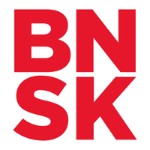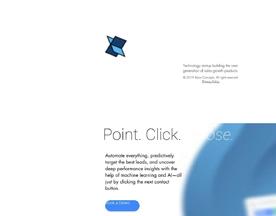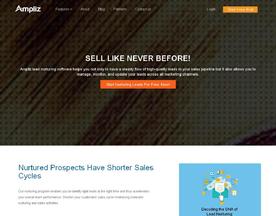What is an outbound call? An outbound call is initiated by a company to customers or leads for sales, support, or information dissemination purposes.
Outbound calling is a critical aspect of sales and marketing strategies for businesses of all sizes. It involves making calls to potential customers or clients in order to generate leads, build relationships, and ultimately increase revenue. While outbound calling can be a highly effective way to reach new customers, it requires a well-planned and executed strategy to be successful.

Understanding Outbound Calls
Outbound calling involves reaching out to potential customers or clients via phone, rather than waiting for them to come to you. This can be done in a variety of ways, including cold calling, warm calling, and follow-up calls. While outbound calling can be a highly effective way to generate leads and build relationships, it requires a thorough understanding of the target audience and a well-developed script to be successful. Additionally, outbound calling requires a high level of skill and training, as well as the ability to handle rejection and overcome objections.
Key Takeaways
- Outbound calling is an important aspect of sales and marketing strategies for businesses of all sizes.
- Understanding the target audience and developing a well-planned script are critical to the success of outbound calling.
- Outbound calling requires a high level of skill and training, as well as the ability to handle rejection and overcome objections.
Understanding Outbound Calls
Definition and Purpose
Outbound calls refer to phone calls made by a representative of a company or organization to a potential or existing customer. The purpose of outbound calls can vary, but they are generally used for sales, market research, fundraising, or surveys. Outbound calls are often used as a proactive approach to reach out to customers and build relationships.
One of the main benefits of outbound calls is that they allow companies to directly reach out to potential customers and provide personalized service. Outbound calls can be used to generate leads, close sales, and follow up with customers after a purchase. They can also be used to gather feedback from customers and conduct market research.
Cold calls are a type of outbound call where the representative reaches out to a potential customer who has not expressed any interest in the company’s products or services. Cold calls can be challenging, but they can also be an effective way to generate new leads and build relationships with potential customers.
Types of Outbound Calls
There are several types of outbound calls that companies can use, depending on their goals and target audience. Some common types of outbound calls include:
Sales Calls: Sales calls are used to sell products or services to potential or existing customers. These calls can be used to generate new business or upsell existing customers.
Market Research Calls: Market research calls are used to gather information about customers’ opinions and preferences. This information can be used to improve products or services and develop new marketing strategies.
Fundraising Calls: Fundraising calls are used to solicit donations from individuals or organizations. These calls are often made by non-profit organizations or political campaigns.
Survey Calls: Survey calls are used to gather feedback from customers about their experiences with a company’s products or services. This information can be used to improve customer satisfaction and loyalty.
Overall, outbound calls can be an effective way for companies to reach out to customers and build relationships. By understanding the different types of outbound calls and their purposes, companies can develop effective strategies to achieve their goals. For more information on outbound calls, check out this resource.
Outbound Call Center Operations
Roles and Responsibilities
Outbound call centers are an essential part of the sales and marketing strategy for many companies. The call center agents are responsible for making outbound calls to potential customers, providing them with information about the company’s products or services, and persuading them to make a purchase. The call center agent’s role is not limited to sales; they may also be responsible for conducting surveys, gathering customer feedback, and providing customer support.
To be successful in their role, call center agents must possess excellent communication and interpersonal skills. They should be able to handle rejection and remain calm under pressure. The agents must also be knowledgeable about the company’s products or services and have a good understanding of the industry.
Call Center Environment
The call center environment is fast-paced and can be stressful. The agents work in a large room with many other agents, and the noise level can be high. The agents typically work in shifts, and the call center may operate 24/7. The call center may also use various technologies such as predictive dialers, call recording systems, and customer relationship management (CRM) software to manage the outbound calls.
To ensure that the call center operates efficiently, the management must provide the agents with the necessary tools and resources. The management should also monitor the agents’ performance and provide them with regular feedback and training. The management should also ensure that the call center complies with all the relevant laws and regulations.
According to Business.com, call centers can be expensive to set up and operate, but they can also be highly effective in generating sales and improving customer satisfaction. The success of the call center depends on the quality of the agents, the management, and the technology used.
Technology in Outbound Calling
Outbound calling has come a long way since its inception. The advent of technology has revolutionized the way businesses approach outbound calling. In this section, we will discuss the various technologies that have made outbound calling more efficient and effective.
Call Center Software
Call center software is a crucial component of outbound calling. It allows businesses to manage their outbound calls efficiently. Call center software provides features such as call routing, call monitoring, and call recording. It also allows businesses to integrate their customer relationship management (CRM) system with their outbound calling efforts. This integration enables businesses to access customer information quickly and efficiently, leading to more personalized interactions with customers.
Automation Tools
Automation tools have become an essential part of outbound calling. They enable businesses to automate repetitive tasks, such as dialing phone numbers and leaving voicemails. This automation saves time and increases the efficiency of outbound calling. Predictive dialers and power dialers are two types of automation tools used in outbound calling. Predictive dialers use algorithms to predict when an agent will become available and dial numbers accordingly. Power dialers dial a predetermined number of phone numbers simultaneously, increasing the chances of connecting with a prospect.
In conclusion, technology has played a significant role in making outbound calling more efficient and effective. Call center software and automation tools have enabled businesses to manage their outbound calling efforts more efficiently. The integration of CRM systems with outbound calling has also led to more personalized interactions with customers. As technology continues to evolve, we can expect outbound calling to become even more efficient and effective.
Here is a link to a resource that provides more information on outbound call center software.
Developing Effective Call Scripts

Creating an effective outbound call script is crucial for any sales team. A well-crafted script can help sales agents to communicate their message clearly and effectively, leading to higher conversion rates. Here are some best practices for script writing:
Script Writing Best Practices
Keep it simple: Use simple language and avoid technical jargon that might confuse the customer. The script should be easy to understand and follow.
Focus on benefits: Highlight the benefits of the product or service being offered. Customers are more likely to buy when they understand how the product or service can help them.
Use a conversational tone: The script should sound natural and conversational. Avoid sounding too scripted or robotic.
Be concise: Keep the script short and to the point. Customers have a limited attention span, so it’s important to get to the point quickly.
Include a call to action: The script should end with a clear call to action, such as scheduling a follow-up call or setting up a demo.
Customizing Scripts for Target Audience
One size does not fit all when it comes to outbound call scripts. It’s important to customize the script for the target audience. Here are some tips for doing so:
Research the audience: Learn as much as possible about the target audience, including their needs, pain points, and interests. This information can be used to tailor the script to their specific needs.
Use the right language: Use language that resonates with the target audience. For example, if the target audience is in the healthcare industry, use language that is specific to that industry.
Personalize the script: Use the customer’s name and any other relevant information to make the script feel more personal.
Test and refine: Continuously test and refine the script based on customer feedback and conversion rates.
By following these best practices and customizing the script for the target audience, sales teams can create effective outbound call scripts that lead to higher conversion rates. For more information on script writing, check out this guide from Salesforce.
Sales and Marketing Strategies

Outbound sales calls are a crucial aspect of any sales and marketing strategy. In order to maximize the effectiveness of these calls, it is important to have a well-planned approach that includes lead generation techniques and strategies for converting prospects into customers.
Lead Generation Techniques
Lead generation is the process of identifying potential customers who may be interested in a product or service. There are several techniques that can be used to generate leads for outbound sales calls, including:
- Content marketing: Creating valuable content that attracts potential customers and encourages them to provide their contact information.
- Social media marketing: Using social media platforms to engage with potential customers and build relationships.
- Email marketing: Sending targeted emails to potential customers who have expressed interest in a product or service.
It is important to track the effectiveness of each lead generation technique to determine which methods are most successful and should be prioritized.
Converting Prospects into Customers
Once leads have been generated, the focus shifts to converting those prospects into customers. This involves building relationships with potential customers, understanding their needs and pain points, and providing them with solutions that meet their needs.
One effective strategy for converting prospects into customers is to focus on building trust and credibility. This can be achieved by providing valuable information, being transparent about pricing and product features, and addressing any concerns or objections that potential customers may have.
Another key factor in converting prospects into customers is to have a clear and compelling value proposition. This involves clearly communicating the unique benefits of a product or service and how it can help solve the customer’s problem or meet their needs.
By implementing effective lead generation techniques and strategies for converting prospects into customers, outbound sales calls can be a powerful tool for driving sales and growing a business.
For more information on lead generation techniques, check out this article from HubSpot, a leading authority on inbound marketing and sales.
Training and Coaching for Success

Effective training and coaching are essential for outbound call agents to achieve success in their roles. Proper training ensures that agents have the necessary skills and knowledge to handle calls effectively, while ongoing coaching and development help agents improve their performance and stay up-to-date with best practices.
Training Sessions for Agents
Training sessions for outbound call agents should cover a range of topics, including communication skills, product knowledge, and sales techniques. These sessions should be interactive and engaging, with plenty of opportunities for agents to practice their skills and receive feedback from trainers.
One valuable resource for training outbound call agents is the International Customer Management Institute. The ICMI offers a range of training courses and resources designed specifically for call center agents, including online courses, webinars, and certification programs.
Ongoing Coaching and Development
Effective coaching and development are essential for helping outbound call agents improve their performance and achieve their goals. Regular coaching sessions can help agents identify areas for improvement and develop strategies for addressing them.
Coaches should provide feedback that is specific, actionable, and focused on helping agents improve their performance. They should also work with agents to develop personalized development plans that take into account their strengths, weaknesses, and career goals.
One effective coaching technique is to use call recordings to identify areas for improvement and provide feedback to agents. Tools like CallRail can help managers record and analyze calls, making it easier to identify coaching opportunities and provide targeted feedback.
Overall, effective training and coaching are essential for outbound call agents to achieve success in their roles. By providing agents with the skills and support they need to excel, managers can help their teams achieve their goals and deliver outstanding customer service.
Performance Metrics and Analytics

Key Performance Indicators (KPIs)
To evaluate the effectiveness of outbound calls, businesses rely on a set of key performance indicators (KPIs). These metrics help in measuring the success of the outbound call campaign and identifying areas that need improvement. Some of the most important KPIs for outbound calls include call volume, occupancy rate, conversion rate, and average handle time.
Call volume refers to the number of calls made by the outbound call center. Occupancy rate is the percentage of time that agents spend on calls. Conversion rate is the percentage of calls that result in a successful outcome, such as a sale or appointment. Average handle time is the average duration of the call, including hold time and after-call work.
By tracking these KPIs, businesses can identify trends and patterns in their outbound call campaigns. For example, if the conversion rate is consistently low, it may indicate that the sales pitch needs to be revised or that the target audience needs to be re-evaluated.
Analyzing Call Data for Insights
Analyzing call data is essential for gaining insights into the performance of outbound call campaigns. Call data can reveal valuable information about customer behavior, agent performance, and campaign effectiveness.
One way to analyze call data is to use call analytics software. This software can track and analyze call metrics, such as call duration, hold time, and call outcome. By analyzing this data, businesses can identify trends and patterns that can help improve the performance of their outbound call campaigns.
Another way to analyze call data is to conduct customer surveys. Surveys can provide valuable feedback on the effectiveness of the outbound call campaign and help identify areas that need improvement. Businesses can use this feedback to refine their sales pitch and improve customer satisfaction.
Overall, performance metrics and analytics are essential for evaluating the success of outbound call campaigns. By tracking KPIs and analyzing call data, businesses can identify areas for improvement and optimize their outbound call campaigns for greater success.
Here is an external resource with more information on outbound call KPIs.
Customer Relationship Management

When it comes to outbound calling, customer relationship management (CRM) is a crucial component for success. Building and maintaining customer trust is vital, as is follow-up and customer retention.
Building and Maintaining Customer Trust
Building trust with customers is essential for any business, and outbound calling is no exception. The first step is to ensure that the customer service representatives are knowledgeable and confident in the product or service they are offering. This can be achieved through training and ongoing support.
Another way to build trust is to integrate CRM into the outbound calling process. By having access to customer data, representatives can personalize their approach and better understand the customer’s needs. This can lead to higher customer satisfaction and a more positive experience overall.
Follow-Up and Customer Retention
Follow-up is critical to customer retention. After an outbound call, it is essential to follow up with the customer to ensure their needs were met and to address any concerns they may have. This can be done through email, phone, or even social media.
CRM integration can also aid in follow-up and customer retention. By keeping track of customer interactions and preferences, representatives can tailor their approach and provide a more personalized experience. This can lead to higher customer satisfaction and increased loyalty.
Overall, customer relationship management is a crucial component of outbound calling. By building and maintaining trust and focusing on follow-up and customer retention, businesses can improve their outbound calling success and increase customer satisfaction.
Here is a link to a resource with more information on customer relationship management.
Regulatory Compliance and Ethical Considerations

Adhering to Legal Standards
Outbound calling is subject to various legal regulations that businesses must comply with to avoid legal repercussions. The Telephone Consumer Protection Act (TCPA) is one such regulation that businesses must follow when conducting outbound calls. The TCPA requires businesses to obtain prior express written consent before making telemarketing calls to consumers. Failure to comply with this regulation can result in hefty fines and legal penalties.
In addition to the TCPA, businesses must also comply with the National Do Not Call Registry. The registry allows consumers to opt-out of receiving telemarketing calls. Businesses are required to maintain a list of consumers who have opted out and ensure that they do not receive any further telemarketing calls.
It is important for businesses to stay up-to-date with the latest legal regulations and ensure that their outbound calling practices are compliant. Failure to do so can result in significant legal and financial consequences.
Ethical Practices in Outbound Calling
In addition to legal compliance, businesses must also consider ethical considerations when conducting outbound calls. Ethical practices involve treating consumers with respect, honesty, and fairness. Businesses should avoid using deceptive or misleading tactics to persuade consumers to make a purchase.
One way to ensure ethical practices is to provide consumers with accurate and truthful information about the product or service being offered. Businesses should also respect consumers’ privacy and only contact them during appropriate hours.
Another ethical consideration is to avoid aggressive or harassing behavior towards consumers. Businesses should respect consumers’ decision to decline an offer and avoid pressuring them to make a purchase.
By adhering to legal standards and ethical practices, businesses can build a positive reputation and establish trust with their consumers.
Here is a link to the Federal Trade Commission’s guidance on telemarketing sales rules for further information on regulatory compliance.
Advanced Outbound Call Techniques

Outbound calling is an essential part of sales and marketing. It is a way to reach out to potential customers, generate leads, and close deals. However, not all outbound calls are created equal. Some are more effective than others. In this section, we will discuss some advanced outbound call techniques that can help increase engagement and improve conversion rates.
Personalization and Customer Engagement
Personalization is one of the most effective techniques for outbound calling. It involves tailoring the call to the specific needs and interests of the customer. By doing so, you can increase engagement and build a stronger relationship with the customer.
One way to personalize outbound calls is to use customer data. This can include information such as their name, location, job title, and company size. By using this data, you can tailor the call to the specific needs and interests of the customer.
Another way to personalize outbound calls is to use a script that is tailored to the customer. This can include information about their industry, pain points, and goals. By doing so, you can demonstrate that you understand their needs and can provide value.
Utilizing Social Media and Email
Social media and email are powerful tools for outbound calling. They can help you reach a wider audience and build relationships with potential customers.
One way to utilize social media is to research potential customers before making the call. This can include looking at their LinkedIn profile or Twitter feed. By doing so, you can learn more about their interests and needs, and tailor the call accordingly.
Email is another powerful tool for outbound calling. It can be used to follow up with potential customers after the call, or to provide additional information. By doing so, you can build a stronger relationship with the customer and increase the chances of closing the deal.
In conclusion, outbound calling is an essential part of sales and marketing. By using advanced techniques such as personalization and utilizing social media and email, you can increase engagement and improve conversion rates. Remember to always tailor the call to the specific needs and interests of the customer, and to follow up with them after the call. For more information on advanced outbound call techniques, check out this resource.
Future Trends in Outbound Calling

As technology continues to advance and businesses seek new ways to reach their customers, outbound calling strategies are evolving. In this section, we will explore the future trends in outbound calling, including the evolution of outbound call strategies and the integration of new technologies.
The Evolution of Outbound Call Strategies
Outbound calling has come a long way since its inception. Initially, outbound calls were made by telemarketers who would cold-call potential customers in an attempt to sell a product or service. However, this approach has become less effective over time, as customers have become more resistant to unsolicited calls.
Today, outbound calling strategies are more targeted and personalized. Rather than cold-calling, businesses are using data analytics to identify potential customers who are more likely to be interested in their products or services. This approach, known as predictive dialing, has been shown to be more efficient and effective than traditional cold-calling.
Integrating New Technologies
As technology continues to advance, businesses are finding new ways to integrate it into their outbound calling strategies. One of the most promising technologies is artificial intelligence (AI). AI can be used to analyze data and identify patterns, allowing businesses to make more informed decisions about who to call and when to call them.
Another technology that is being integrated into outbound calling strategies is chatbots. Chatbots can be used to handle routine customer inquiries, freeing up human agents to focus on more complex issues. This approach has been shown to improve efficiency and reduce costs.
Overall, the future of outbound calling looks promising. As businesses continue to embrace new technologies and refine their strategies, we can expect to see continued growth in this area. For more information on outbound calling strategies and trends, check out this resource.
Frequently Asked Questions

What are the primary objectives of making outbound calls in a call center?
The primary objectives of making outbound calls in a call center are to generate sales, conduct market research, and provide customer support. Outbound calls are typically made to potential customers who have not yet expressed an interest in the company’s products or services. The goal of these calls is to persuade the customer to make a purchase or to provide information that will help the company improve its products or services.
How does the structure of an outbound call script typically differ from that of an inbound call?
The structure of an outbound call script typically differs from that of an inbound call in several ways. Outbound call scripts are usually more focused on selling a product or service, while inbound call scripts are more focused on providing customer support. Outbound call scripts are typically shorter and more direct, while inbound call scripts are longer and more detailed.
What are the key differences between cold calling and other forms of outbound calling?
Cold calling is a form of outbound calling in which the salesperson contacts a potential customer who has not shown any previous interest in the company’s products or services. Other forms of outbound calling include warm calling, where the salesperson contacts a potential customer who has shown some interest in the company’s products or services, and referral calling, where the salesperson contacts a potential customer who has been referred to the company by an existing customer.
Can you provide examples of different types of outbound calls commonly made by businesses?
Some examples of different types of outbound calls commonly made by businesses include sales calls, market research calls, and customer support calls. Sales calls are made to potential customers with the goal of selling a product or service. Market research calls are made to gather information from potential customers about their needs and preferences. Customer support calls are made to provide assistance to existing customers.
What strategies are effective for improving the success rate of outbound call campaigns?
Some effective strategies for improving the success rate of outbound call campaigns include targeting the right audience, using a well-crafted script, providing training and support to sales representatives, and using data to track and analyze results. It is also important to follow up with potential customers and to establish a relationship with them.
How is the flow of an outbound call structured to optimize customer engagement?
The flow of an outbound call is typically structured to optimize customer engagement by following a specific sequence of steps. These steps may include introducing oneself, asking questions to identify the customer’s needs, presenting the product or service, addressing any objections, and closing the sale. It is important to maintain a friendly and professional tone throughout the call and to actively listen to the customer’s responses.
For more information on outbound calling strategies, click here.















